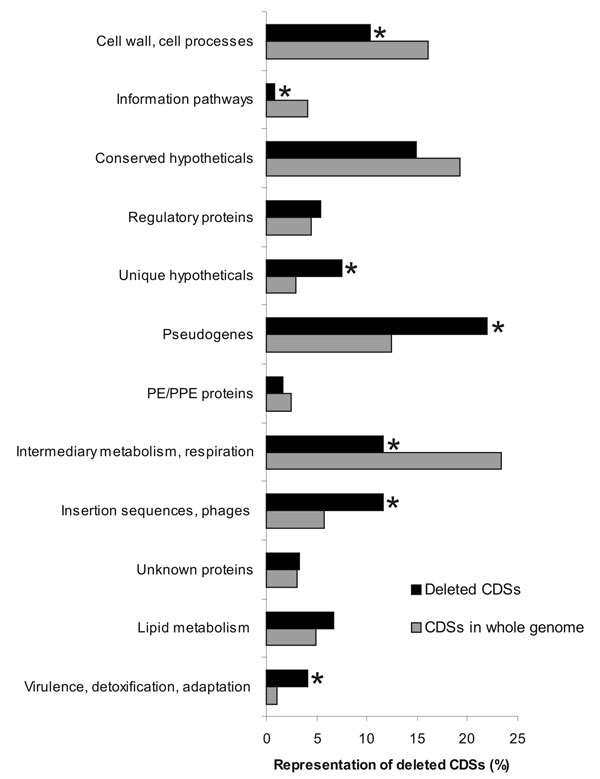Volume 13, Number 7—July 2007
Research
Ongoing Genome Reduction in Mycobacterium ulcerans
Figure 6

Figure 6. Functional categories of coding sequences (CDSs) and pseudogenes and their frequencies in the deletions and the whole genome. CDSs and pseudogenes in the identified regions of difference (RDs) and in the entire reference Mycobacterium ulcerans Agy99 genome were functionally categorized; the frequencies of individual categories are compared. Statistically overrepresented in the RDs were pseudogenes; insertion sequences; CDSs encoding unique hypothetical proteins; and proteins involved in virulence, detoxification, and adaptation. *Significant differences (p<0.05).
Page created: June 23, 2010
Page updated: June 23, 2010
Page reviewed: June 23, 2010
The conclusions, findings, and opinions expressed by authors contributing to this journal do not necessarily reflect the official position of the U.S. Department of Health and Human Services, the Public Health Service, the Centers for Disease Control and Prevention, or the authors' affiliated institutions. Use of trade names is for identification only and does not imply endorsement by any of the groups named above.